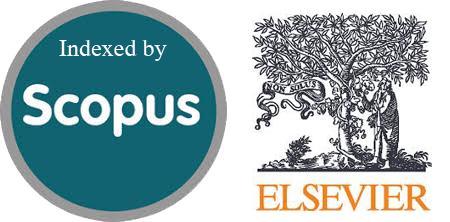Perception and Application of Dental Artificial Intelligence in Orthodontic Clinical Practice: A Cross-Sectional Survey of Orthodontists in Iraq
DOI:
https://doi.org/10.54133/ajms.v9i1.2050Keywords:
Artificial intelligence, Attitudes of health personnel, Clinical practice, Knowledge, Orthodontics, PerceptionsAbstract
Background: The adoption of artificial intelligence is rapidly expanding and has significantly influenced orthodontic practice. Objective: To investigate specialized orthodontists' perceptions and attitudes toward artificial intelligence in orthodontic practice. Methods: An anonymous, web-based cross-sectional survey was conducted using Google Forms. An expert panel evaluated the survey instrument for content validity using Lawshe's method and for face validity by measuring inter-rater reliability. The survey comprised 25 closed-ended and one open-ended question organized into six sections. After its official release, the survey link was disseminated to all Iraqi Orthodontic Society members from January to March 2025. Descriptive statistics were performed to categorize the age groups of the participants. Results: 101 valid surveys were collected and analyzed, highlighting a 63% response rate. The results revealed that although most respondents (61.4%) were aware of using AI-driven software programs, a significant percentage (40.6%) reported that they had never used such programs, underscoring a certain level of deficiency in applying AI in orthodontic practice. The awareness level was higher for AI applications in cephalometric analysis (60.0%) compared to other applications, such as orthognathic surgery and the biomechanics domain. Conclusions: Generally, there was a good level of awareness and knowledge about AI's role in orthodontics, with strong readiness among the specialists to engage in AI-related training and integrate it into their clinical routines. The study supports further education, training, evidence-based validation, and designing more AI-powered tools addressing different domains of orthodontics, particularly biomechanics, which are essential to bridge the trust gap.
Downloads
References
Hamet P, Tremblay J. Artificial intelligence in medicine. Metabolism. 2017;69S:S36–40. doi: 10.1016/j.metabol.2017.01.011. DOI: https://doi.org/10.1016/j.metabol.2017.01.011
Mohammad-Rahimi H, Nadimi M, Rohban MH, Shamsoddin E, Lee VY, Motamedian SR. Machine learning and orthodontics, current trends and the future opportunities: A scoping review. Am J Orthod Dentofacial Orthop. 2021;160(2):170-192.e4. doi: 10.1016/j.ajodo.2021.02.013. DOI: https://doi.org/10.1016/j.ajodo.2021.02.013
Park JH, Kim YJ, Kim J, Kim J, Kim IH, Kim N, et al. Use of artificial intelligence to predict outcomes of nonextraction treatment of Class II malocclusions. Semin Orthod. 2021;27:87–95. doi: 10.1053/j.sodo.2021.05.005. DOI: https://doi.org/10.1053/j.sodo.2021.05.005
Shan T, Tay FR, Gu L. Application of artificial intelligence in dentistry. J Dent Res. 2021;100:232–244. doi: 10.1177/0022034520969115. DOI: https://doi.org/10.1177/0022034520969115
Fatima A, Shafi I, Afzal H, Díez IDLT, Lourdes DRSM, Breñosa J, et al. Advancements in dentistry with artificial intelligence: Current clinical applications and future perspectives. Healthc Basel Switz. 2022;10:2188. doi: 10.3390/healthcare10112188. DOI: https://doi.org/10.3390/healthcare10112188
Miragall MF, Knoedler S, Kauke-Navarro M, Saadoun R, Grabenhorst A, Grill FD, et al. Face the future—Artificial intelligence in oral and maxillofacial surgery. J Clin Med. 2023;12:6843. doi: 10.3390/jcm12216843. DOI: https://doi.org/10.3390/jcm12216843
Larkin A, Kim JS., Kim N, Baek SH., Yamada S, Park K, et al. Accuracy of artificial intelligence‐assisted growth prediction in skeletal Class I preadolescent patients using serial lateral cephalograms for a 2‐year growth interval. Orthod Craniofac Res. 2024;27:535–543. doi: 10.1111/ocr.12764. DOI: https://doi.org/10.1111/ocr.12764
Hanenkrath J, Park JH, Bay C. Training, use, and modifications related to artificial intelligence in postgraduate orthodontic programs in North America. Am J Orthod Dentofac Orthop. 2025;167:89-94.e2. doi: 10.1016/j.ajodo.2024.09.008. DOI: https://doi.org/10.1016/j.ajodo.2024.09.008
Topol EJ. High-performance medicine: the convergence of human and artificial intelligence. Nat Med. 2019;25:44–56. doi: 10.1038/s41591-018-0300-7. DOI: https://doi.org/10.1038/s41591-018-0300-7
Khanagar SB, Al-Ehaideb A, Vishwanathaiah S, Maganur PC, Patil S, Naik S, et al. Scope and performance of artificial intelligence technology in orthodontic diagnosis, treatment planning, and clinical decision-making - A systematic review. J Dent Sci. 2021;16:482–492. doi: 10.1016/j.jds.2020.05.022. DOI: https://doi.org/10.1016/j.jds.2020.05.022
Lin L, Tang B, Cao L, Yan J, Zhao T, Hua F, et al. The knowledge, experience, and attitude on artificial intelligence-assisted cephalometric analysis: Survey of orthodontists and orthodontic students. Am J Orthod Dentofacial Orthop. 2023;164(4):e97-e105. doi: 10.1016/j.ajodo.2023.07.006. DOI: https://doi.org/10.1016/j.ajodo.2023.07.006
Thurzo A, Kurilová V, Varga I. Artificial intelligence in orthodontic smart application for treatment coaching and its impact on clinical performance of patients monitored with AI-TeleHealth system. Healthc Basel Switz. 2021;9:1695. doi: 10.3390/healthcare9121695. DOI: https://doi.org/10.3390/healthcare9121695
Khanagar S, Alkathiri M, Alyami K, Alhejazi M. Knowledge, attitudes, and perceptions of dental students towards artificial intelligence in Riyadh, Saudi Arabia. Med Sci. 2021;25:1857–1867.
Seram T, Batra M, Gijwani D, Chauhan K, Jaggi M, Kumari N. Attitude and perception of dental students towards artificial intelligence. Univ J Dent Sci. 2021;7. doi: 10.21276/ujds.2021.7.3.13. DOI: https://doi.org/10.21276/ujds.2021.7.3.13
Aboalshamat KT. Perception and utilization of artificial intelligence (AI) among dental professionals in Saudi Arabia. Open Dent J. 2022;16:e187421062208110. doi: 10.2174/18742106-v16-e2208110. DOI: https://doi.org/10.2174/18742106-v16-e2208110
Murali S, Bagewadi A, Lokesh Kumar S, Fernandes A, Jayapriya T, Panwar A, et al. Knowledge, attitude, and perception of dentists regarding the role of artificial intelligence and its applications in oral medicine and radiology: A cross sectional study. J Oral Med Oral Surg. 2023;29:22. doi: 10.1051/mbcb/2023018. DOI: https://doi.org/10.1051/mbcb/2023018
Jeong H, Han SS, Jung HI, Lee W, Jeon KJ. Perceptions and attitudes of dental students and dentists in South Korea toward artificial intelligence: a subgroup analysis based on professional seniority. BMC Med Educ. 2024;24:430. doi: 10.1186/s12909-024-05441-y. DOI: https://doi.org/10.1186/s12909-024-05441-y
Kharroubi SA, Tannir I, Abu El Hassan R, Ballout R. Knowledge, attitude, and practices toward artificial intelligence among university students in Lebanon. Educ Sci. 2024;14:863. doi: 10.3390/educsci14080863. DOI: https://doi.org/10.3390/educsci14080863
Bhanotia D, Alam ST, Trehan M, Rai D, Rai A. Assessing the AI acumen: A study on the knowledge, attitude and behaviour of dental students towards artificial intelligence. J Contemp Orthod. 2024;8:290–293. doi: 10.18231/j.jco.2024.043. DOI: https://doi.org/10.18231/j.jco.2024.043
Hegde S, Nanayakkara S, Jordan A, Jeha O, Patel U, Luu V, et al. Attitudes and perceptions of Australian dentists and dental students towards applications of artificial intelligence in dentistry: A survey. Eur J Dent Educ. 2025;29:9-18. doi: 10.1111/eje.13042. DOI: https://doi.org/10.1111/eje.13042
Pringle AJ, Kumaran V, Missier MS, Nadar ASP. Perceptiveness and attitude on the use of artificial intelligence (AI) in dentistry among dentists and non-dentists - A regional survey. J Pharm Bioallied Sci. 2024;16:S1481–1486. doi: 10.4103/jpbs.jpbs_1019_23. DOI: https://doi.org/10.4103/jpbs.jpbs_1019_23
Mengi A, Singh RP, Mengi N, Kalgotra S, Singh A. A questionnaire study regarding knowledge, attitude and usage of artificial intelligence and machine learning by the orthodontic fraternity of Northern India. J Oral Biol Craniofacial Res. 2024;14:500–506. doi: 10.1016/j.jobcr.2024.06.004. DOI: https://doi.org/10.1016/j.jobcr.2024.06.004
Waltz CF, Strickland OL, Lenz ER, (Eds.), Measurement in nursing research, (2nd Edn.), Philadelphia: F.A. Davis Co. 2nd ed; 1991.
Davis LL. Instrument review: Getting the most from a panel of experts. Appl Nurs Res. 1992;5:194–719. doi: 10.1016/S0897-1897(05)80008-4. DOI: https://doi.org/10.1016/S0897-1897(05)80008-4
Lynn MR. Determination and quantification of Content validity: Nurs Res. 1986;35:382-386. doi: 10.1097/00006199-198611000-00017. DOI: https://doi.org/10.1097/00006199-198611000-00017
Lawshe CH. A quantitative approach to content validity. Pers Psychol. 1975;28:563–575. doi: 10.1111/j.1744-6570.1975.tb01393.x. DOI: https://doi.org/10.1111/j.1744-6570.1975.tb01393.x
Grant JS, Kinney MR. Using the Delphi technique to examine the content validity of nursing diagnoses. Int J Nurs Terminol Classif. 1992;3:12–22. doi: 10.1111/j.1744-618X.1992.tb00193.x. DOI: https://doi.org/10.1111/j.1744-618X.1992.tb00193.x
Waltz CF, (Ed.), Measurement in Nursing and Health Research. Springer Publishing Company; 2005.
Oluwatayo J.A. Validity and reliability issues in educational research. J Educ Soc Res. 2012;2:391.
Altman DG, (Ed.), Practical statistics for medical research. Boca Raton, Fla: Chapman & Hall/CRC; 1999.
Gupta S, Verma S, Chauhan AK, Roy MS, Rajkumari W, Sahgal C. Knowledge, attitude, and perception of orthodontic students, and orthodontists regarding role of artificial intelligence in field of orthodontics—An online cross-sectional survey. J World Fed Orthod. 2025;14:3–11. doi: 10.1016/j.ejwf.2024.08.002. DOI: https://doi.org/10.1016/j.ejwf.2024.08.002
Surendran A, Daigavane P, Shrivastav S, Kamble R, Sanchla AD, Bharti L, et al. The future of orthodontics: Deep learning technologies. Cureus. 2024. doi: 10.7759/cureus.62045. DOI: https://doi.org/10.7759/cureus.62045
Katyal D, Balakrishnan N. Evaluation of the accuracy and reliability of WebCeph – An artificial intelligence-based online software. APOS Trends Orthod. 2022;12:271–276. doi: 10.25259/APOS_138_2021. DOI: https://doi.org/10.25259/APOS_138_2021
Chuchra A, Gupta K, Arora R, Bindra S, Hingad N, Babbar A. Digital cephalometric analysis: Unveiling the role and reliability of semi-automated OneCeph, artificial intelligence-powered WebCeph mobile app, and semi-automated computer-aided NemoCeph software in orthodontic practice. Cureus. 2024. doi: 10.7759/cureus.72948. DOI: https://doi.org/10.7759/cureus.72948
Weir T. Clear aligners in orthodontic treatment. Aust Dent J. 2017;62:58–62. doi: 10.1111/adj.12480. DOI: https://doi.org/10.1111/adj.12480
Mennella C, Maniscalco U, De Pietro G, Esposito M. Ethical and regulatory challenges of AI technologies in healthcare: A narrative review. Heliyon. 2024;10:e26297. doi: 10.1016/j.heliyon.2024.e26297. DOI: https://doi.org/10.1016/j.heliyon.2024.e26297
Rokaya D, Jaghsi AA, Jagtap R, Srimaneepong V. Artificial intelligence in dentistry and dental biomaterials. Front Dent Med. 2024;5:1525505. doi: 10.3389/fdmed.2024.1525505. DOI: https://doi.org/10.3389/fdmed.2024.1525505
Grant JS, Davis LL. Selection and use of content experts for instrument development. Res Nurs Health. 1997;20:269–274. doi: 10.1002/(sici)1098-240x(199706)20:3<269::aid-nur9>3.0.co;2-g. DOI: https://doi.org/10.1002/(SICI)1098-240X(199706)20:3<269::AID-NUR9>3.3.CO;2-3
Polit DF, Beck CT, Owen SV. Is the CVI an acceptable indicator of content validity? Appraisal and recommendations. Res Nurs Health. 2007;30:459–467. doi: 10.1002/nur.20199. DOI: https://doi.org/10.1002/nur.20199
Wu M-J, Zhao K, Fils-Aime F. Response rates of online surveys in published research: A meta-analysis. Comput Hum Behav Rep. 2022;7:100206. doi: 10.1016/j.chbr.2022.100206. DOI: https://doi.org/10.1016/j.chbr.2022.100206

Downloads
Published
How to Cite
Issue
Section
License
Copyright (c) 2025 Al-Rafidain Journal of Medical Sciences ( ISSN 2789-3219 )

This work is licensed under a Creative Commons Attribution-NonCommercial-ShareAlike 4.0 International License.
Published by Al-Rafidain University College. This is an open access journal issued under the CC BY-NC-SA 4.0 license (https://creativecommons.org/licenses/by-nc-sa/4.0/).











